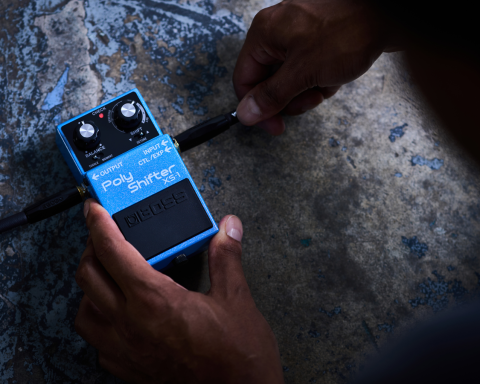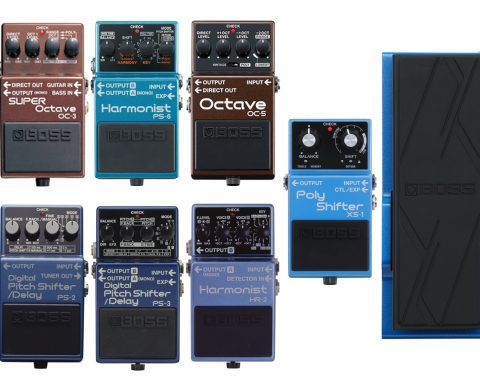A pedalboard is an ecosystem, and each stompbox plays a distinct role, from the shimmer of reverb to the frayed fuzz that gives a solo teeth. But another vital factor is the subtle interaction between multiple pedals and how their order impacts your overall tone. For anyone who’s ever wondered why identical pedals sound different in different players’ rigs, the answer comes down to a signal chain. Explore this in-depth guide to assembling the ideal effects pedal order.
Guitar Signal Chain and Why it Matters
Signal chain is central to getting the best from a rig. Think of it as the epic journey of an audio signal from the guitar jack to an amp. Just as a great recipe adds ingredients in the correct order, optimizing pedal order lets each effect shine. At the same time, it circumvents a muddied, cluttered, and unprofessional tone.
Guitar Pedal Order
Great tone is subjective, rules are made to be broken, and some of history’s most incredible rigs fly in the face of conventional wisdom. Guitarists must learn to trust their ears and audience. However, starting with the order that most pros rely on provides a rock-solid foundation from which to experiment later. Let’s explore the technical rationale behind this suggested pedal order.
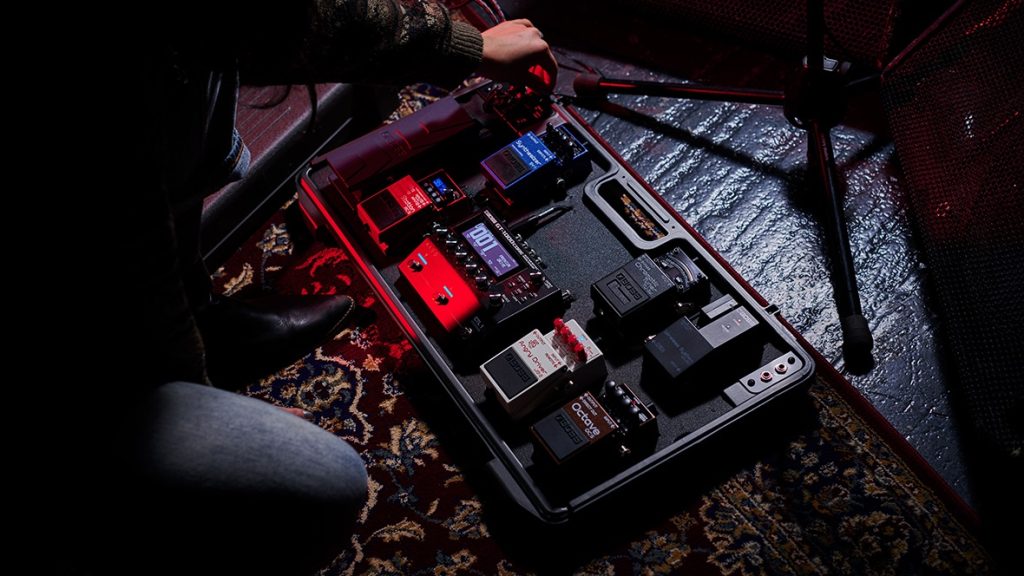
Main Pedal Families
No two BOSS pedals are alike, each having a unique effect on guitar sound. But we can think of several different pedals as belonging to the same effects category based on how they process the audio signal. This is an excellent jumping-off point to understand why pedals belong in our advised order.
Let’s start with the pedal that should always be the first link in any professional signal chain. Tuners don’t belong to any category; there’s nothing else quite like them. To that end, their pole position in the lineup makes perfect sense. After all, a pedal like the TU-3 or TU-3W hears the signal from a guitar and determines whether it’s in tune. Logically, the purer and cleaner that signal, the more accurately the tuner can detect the pitch.
"The purer and cleaner that signal, the more accurately the tuner can detect the pitch."
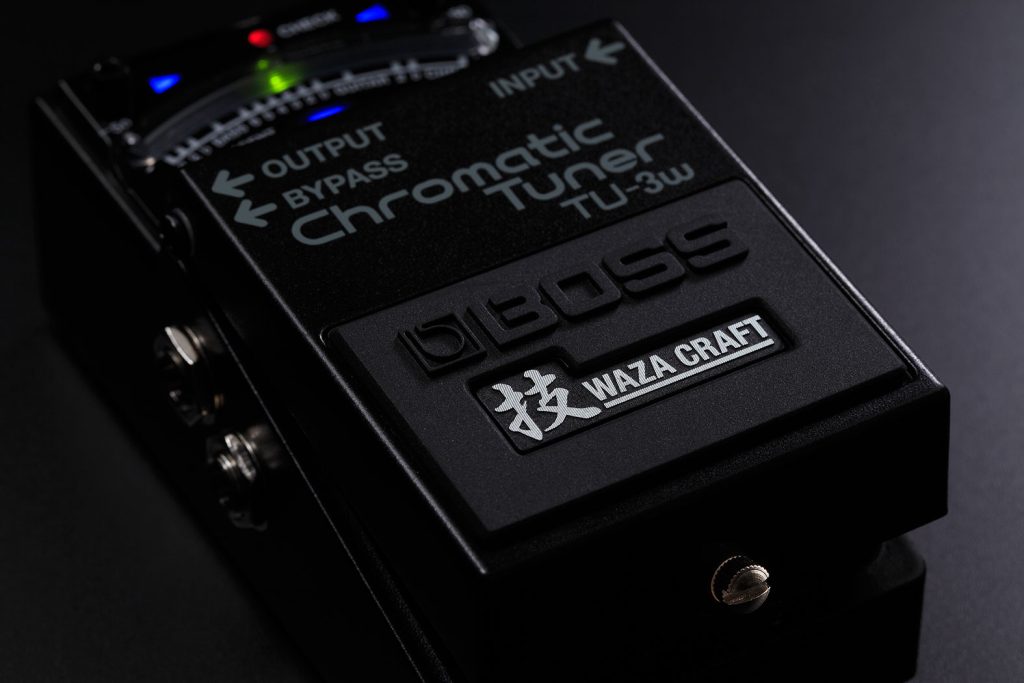
Any tuner will get confused if we place it after a dirty drive or ping-pong delay. Cumulative signal loss occurs along a chain of true-bypass pedals will make it less accurate. The solution is always to put the tuner first and use buffered bypass pedals that protect the quality of the tone all down the line.
Pedals that Change Dynamics and Pitch
Some of the wildest guitar effects use pitch shifters like the PS-6 Harmonist, octave pedals like the OC-5, and synth stompboxes, including the SY-1 Synthesizer. But despite the out-there results, these pedals don’t thrive on chaos. As with the tuner, placing them early is best and gives them a clean signal. Fundamentally, pitch-altering effects work by transposing the guitar signal up or down, and it’s far easier for them to track a tidy signal than one shredded by distortion.
Similarly, place a compression pedal like the CP-1X close to the guitar because these units work best with an even-volume signal. In addition, we’re aiming to compress the clean guitar tone rather than the sound of the effects to come. And a wah pedal? Opinions vary, but placing this filter effect directly after the tuner and before the drive section will optimize signal frequency before altering the gain.
Pedals that Produce Tone
When we talk about pedals in this category, we usually mean overdrive and distortion. Both are pedalboard mainstays and many players’ first acquisitions. Think of these effects as the core ingredient in tone and modulation flavors them. BOSS pedals vary in function and ferocity—from the DS-1 Distortion to the HM-2W and BD-2 Blues Driver. Yet all will radically affect the signal’s dynamics and amplify the noise of any pedal that comes before. The basic rule of thumb is to modulate gain, not increase the modulation gain, so noisy pedals should go early.
With multiple pedals in this category, stack them from the lightest drive to the heaviest distortion. This spot is also the logical place for a noise gate like the NS-2 to control the unruly pedalboard section.
Fuzz
Fuzz is a unique style of distortion that originated during the ’60s psychedelic era. While fuzz is a close relative of overdrive and distortion, it creates a higher degree of clipping, resulting in a nasty, fizzy tone perfect for vintage Stooges-style leads and riffs ala “Satisfaction.” Place fuzz pedals before the tuner if it’s not a true bypass, and remember to turn the fuzz off when tuning.

Pedals that Modify Tone
Modulation includes some of the most magical effects, from the swoosh of flangers and phasers to the subtle multiples of chorus. This category is vital for creating a signature tone. To stand out in the mix, accentuate a modulation effect by placing it after the drive section. Aggressive pedals will push the signal waveform hard and let modulation units deal with extreme harmonic content, creating exciting results.
Some players disagree, so remember that the positioning of modulation pedals isn’t set in stone. With more involved units like the MD-200 and MD-500, use the Insert Loop feature to punch in mod effects before, after, or around drive pedals.
"Modulation includes some of the most magical effects, from the swoosh of flangers and phasers to the subtle multiples of chorus."
Pedals that Repeat Sound
By this point in the chain, with the audio signal passing through three pedalboard sections, it’s time to add the atmosphere. Delay pedals like the DD-8 or the RE-202 lend instant drama to guitar parts. Still, if we place it after distortion, this effect type will deliver cleaner and more even repeats. Go the other way, and we risk those repeats bleeding together or dropping out abruptly due to the drive pedal’s compression.
If keeping the delay ultra-clean is a priority, consider using the amp’s effects loop. At the other extreme, when running your delay direct into the dashboard of an overdriven amp—a tactic used by legends from The Edge to Eddie Van Halen—roll back the effect level and repeats to keep sound under control.
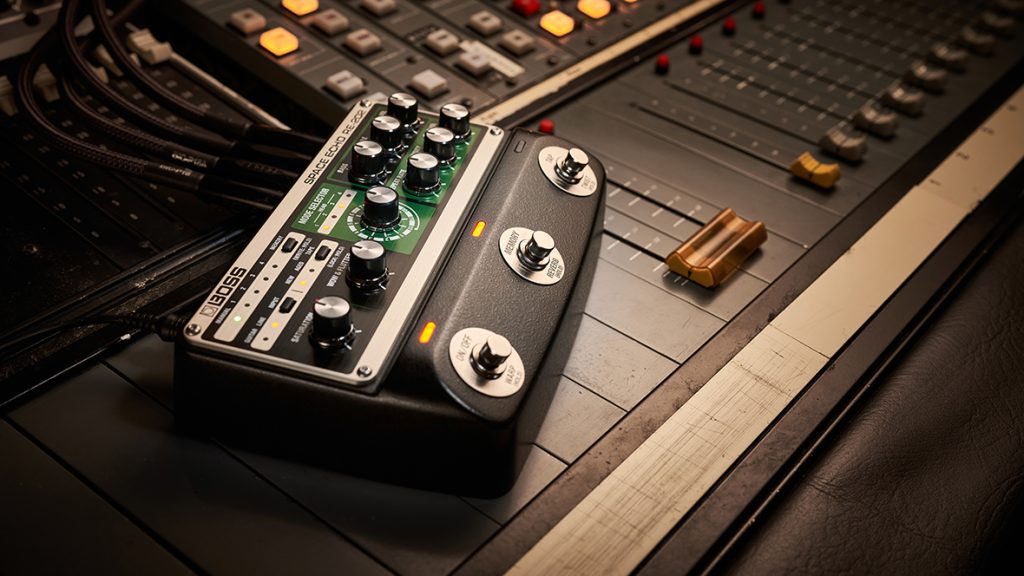
Where Does a Looper Go in the Signal Chain?
Loopers like the RC Loop Station series are real-time multi-tracking devices rather than mere effects. Still, they demand a place in the pedal chain. Exactly where that is depends on how one wants to effect the looped phrases. For example, adding delay after loops would demand time control that isn’t always feasible during a gig. With that in mind, the looper should come before the delay. Play around to find the perfect spot.
Pedals that Create Ambience
When we play music without amplification, reverb occurs in the space. It’s the last thing that happens before it reaches our ears. Apply the same principle to the signal chain. Delayed reverb can sound muddy, so it’s usually best to place this effect after the delay as the final link in the chain. Or we can separate reverb via the amp’s effects loop for the cleanest possible voicing.
"Loopers like the RC Loop Station series are real-time multi-tracking devices rather than mere effects. Still, they demand a place in the pedal chain."
EQ Pedals
Where does an EQ pedal go in the signal chain? It’s open to debate, but one school of thought is to sculpt the fundamental guitar tone before any other effect touches it. Others argue that it’s best to control the final tone once it’s passed through the gamut of processing. Either way, using a dedicated EQ pedal like the GE-7 Graphic Equalizer ensures a level of minute tonal control that will provide sonic clarity.
Adding Volume and Expression Pedals
Again, there’s debate over the best position for a volume pedal in the signal chain. A popular approach is to place a pedal like the FV-500H at the start. This placement provides more control over the volume level before it hits other effects, letting players clean up the overdriven sound. Others argue that only reverb and delay should come after the volume pedal, as this gives complete signal control.
"The defining benefit of a switcher is the ability to activate multiple pedals with a single press on this central hub."
Using a Switcher to Control Effects Pedals
So far, we’ve looked at running a lineup of standalone stompboxes and activating each individually as required during the song. But there is another way to manage effects: a multi-effects switching system. It can take much of the pain out of optimizing a signal chain.
The defining benefit of a switcher is the ability to activate multiple pedals with a single press on this central hub. This feature eliminates the need for countless taps before hitting the big solo. An essential advantage of switchers like the ES-5 or ES-8 is their flexibility.
"Gaining technical-level knowledge lets players fine-tune their signature tone. Remember, experimentation is the name of the game."
Amplifier/Cabinet Simulator Pedals
Amp and cab sim pedals, including those that use IR technology such as the BOSS IR-2 Amp & Cabinet and IR-200 Amp & IR Cabinet, provide a direct, amp/cab-free way to achieve professional-sounding guitar tones. The versatile IR-2 and IR-200 can function as standalone preamps or IR cabs (with loadable functionality). Naturally, both elements can be combined for a complete amp and cab simulation.
The most common placement for an amp/cab sim pedal is at the end of the chain, where the signal is then routed to a PA system, audio interface, or headphones. This ensures that all effects are processed as they would be in a traditional rig.

Additionally, the BOSS IR-2 and IR-200 include an effects loop, providing alternative routing options. Time-based effects like delay and reverb can be placed in this loop, as they would be in the effects loop of a real amplifier. This often results in a more defined and natural-sounding spatial effect.
If you prefer a different approach, you can place delays and reverbs after the IR-2/IR-200. Experimenting with effect placement can help you find the right setup for your playing style. With the IR-2 and IR-200, you have the flexibility to shape your signal chain in a way that best suits your taste and workflow. With the above in mind, we recommend experimenting to discover what works for you.
Click here for more information on combining the IR-2 and IR-200 with other effects.
"With the IR-2 and IR-200, you have the flexibility to shape your signal chain in a way that best suits your taste and workflow."
Acoustic and Bass Pedal Order
The old mentality that effects are the preserve of electric guitarists has faded over the years. Bass and acoustic players now manipulate sounds using a new generation of feature-rich pedals. The optimal pedal order for acoustic and bass is a subject of its own. Check out the article below for advice on the best way to set up your bass signal chain.

Order of Operation: A Guide to Bass Effects Signal Chain
Learn to set up a pedalboard in this guide to the bass signal chain. Plus, explore the versatile Katana Bass amp series and its effects.
Signal Chain Tips and Tricks
The advice above is a good foundation for players using common effect types and mastering the basics of assembling a pedalboard. With more experience and a more extensive pedal collection, it’s natural to want to dive deeper. Gaining technical-level knowledge lets players fine-tune their signature tone. Remember, experimentation is the name of the game. Happy stomping.




